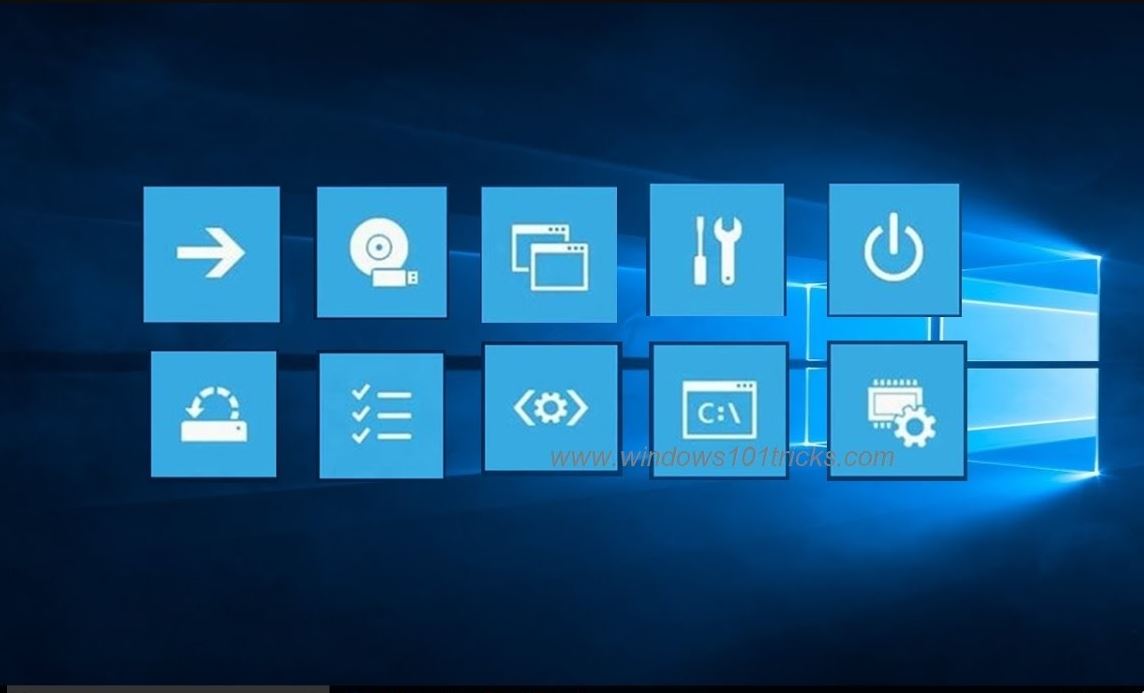Did your Windows 11 or Windows 10 PC won’t start normally, system crashes frequently after Windows 11 upgrade? Don’t worry, Here in this post we have different ways to access advanced startup options to boot in Safe Mode, change UEFI settings, Perform startup repair, and use System Restore or System Recovery image to get your PC working again.
Windows 11 Boot Options Menu
Windows 11 or 10 includes the “Windows Startup Settings” or “Advanced startup” options formerly known as “Advanced boot options” that can help you to troubleshoot, diagnose, and fix your PC if it is having problems starting. Or you can say it’s a central fix-it location for the entire operating system where you can access Windows diagnostic and repair tools like Reset This PC, System Restore, Command Prompt, Startup Repair, and much more.
If you have a problem with Windows 11, for instance, unexpected system shutdown, blue screen error, infected with virus/malware, or the system is unstable You can troubleshoot this from advanced options.
Boot to Advanced Startup Options in Windows 10
There are various ways to Boot to Advanced Startup Options in Windows 10, Here we have listed 5 different ways to access Advanced startup options, either when you’re still running the operating system, or when your computer isn’t starting to access the troubleshooting tools to fix any issues.
Using Windows installation media
Let’s start with the most recommended method, If Windows 10 isn’t loading in your PC or Due to Blue Screen Error unable to start the system, using Windows 10 installation media you can access advanced startup options and troubleshoot the issue.
Note: As Windows won’t start normally we require an installation media to perform feature steps if you don’t have read how to create Windows 10 installation media from here.
- When you are ready with Windows 10 Bootable USB or DVD put it and restart your PC,
- Press F12 to access and select boot device (select Boot device CD/DVD or removable disk)
- When you see press any key to boot from CD or DVD, press any key on the keyboard.
- From windows installation screen skip the first window and click repair your computer.
- Now click troubleshoot,
- This will represent the advanced options screen.
Here you can access various diagnostic tools include startup settings option from where you can boot into safe mode, to repair your Windows 10 PC from bad drivers or problems with certain applications.
- Also, there is a “System Restore” option to restore your PC to a previous good working condition.
- You can also access the “System Image Recovery” tool, which let you recover Windows 10, settings, and programs from a specific full system backup.
- And you can fix various common problems, like bootloader issues that stop the operating system from loading using “Startup Repair”.
- you can also launch the “Command Prompt” to perform advanced troubleshooting.
- Also, you see an option to roll back to the previous build when the current version of Windows 10 is causing issues after an upgrade.
Access Advanced startup From the Settings app
If your PC is in running state, you can access advanced options from the settings app here how.
- Press Windows + I to Open Settings.
- Click on Update & Security Recovery.
- Under “Advanced startup” click the Restart button.
- This will restart windows,
- Now click troubleshoot then advanced options.
Access advanced startup using the Power menu
you can also access the Windows Startup Settings through the Power menu in the Start menu.
- Open Start.
- Click the Power button.
- Press and hold the Shift key and click the Restart button.
- This will restart windows,
- Now click troubleshoot then advanced options.
Using Command Prompt
You can also access the troubleshooting and recovery options using Command Prompt with these steps:
- Open Start.
- Search for Command Prompt, right-click the top result, and select the Run as administrator option.
- Type the following command and press Enter
shutdown /r /o /f /t 00
When you press enter key windows will Restart suddenly to Choose options screen, Here select Troubleshooting. This will open the windows Advanced options.
Lock screen Power menu
Alternatively, you can also use the Power menu in the Lock screen to access the Advanced startup experience using these steps:
- Open Lock screen.
- Access the Sign-in screen.
- Click the Power button in the bottom-right corner.
- Press and hold the Shift key and click the Restart button.
Here a quick video shows different ways to Access Advanced Startup Options on Windows 10.
Also read:
- Fix your pc needs to be repaired error 0xc0000225 on Windows 10
- Laptop Freezes and crashes frequently after Windows 10 Upgrade
- Fix This App Has Been Blocked For Your Protection in Windows 10
- How to Disable Driver Signature Enforcement on Windows 10
- Skype not responding on Windows 10 update
- Fix the print spooler service not running after Windows 10 update







